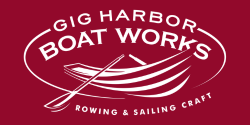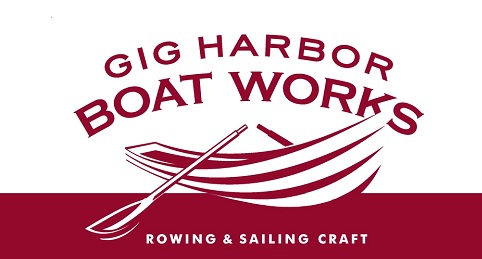http://www.bizjournals.com/seattle/stories/2002/07/15/smallb1.html
Sailors’ delight: Gig Harbor Boat Works builds small, versatile watercraft by hand
Puget Sound Business Journal – by Steve Wilhelm, Staff Writer
Date: Sunday, July 14, 2002, 9:00pm PDT
When David Robertson was a young boat bum hanging out on the docks of Gig Harbor in the early 1970s, he and three friends used to dream about building boats for a livelihood.
His three friends went to boat-building schools, while Robertson earned a business degree at the University of Puget Sound and entered corporate life. For years he nurtured his interest in classic boats on the side, resurrecting two older wooden sailboats and then completing a third that had been partly built.
Then he got a small inheritance when his father died, and with some income guaranteed he decided it was time to try leaving corporate life and making his passion into his livelihood. Now Robertson runs a successful boat-building company – while his friends don’t.
Robertson has a genuine love of good small-boat design and creating beautiful watercraft, but the key attribute that has kept his company thriving and profitable while competitors appear and vanish like restaurants is his prior knowledge of business principles.
“When I started this business it was virtually an overnight success, but a lot of that hinged on what I learned working on other people’s dollars,” he said.
Since Robertson founded Gig Harbor Boat Works Inc. in 1988, it has become one of the nation’s leading builders of small rowboats and sailboats with classic lines. The company also been profitable every year, on revenues that gradually climbed to the current $450,000.
Gig Harbor Boat Works has a charming, rustic air, operating out of an 1,800- square-foot wooden building in the middle of a grassy field, just 100 feet from Robertson’s Gig Harbor home. It’s largely a family operation, employing his wife, stepson and sometimes one of his daughters.
Despite Gig Harbor Boat Works’ small size, Robertson operates under the same lean manufacturing principles he used as plant manager for Davis Walker Steel in Kent.
For instance, the Gig Harbor shop looks remarkably uncluttered for a small space that produces two boats a week. Robertson keeps things sparse, and his bottom line alive, by practicing just-in-time inventory control and only buying parts and materials when he needs them.
He also sticks to what he knows, which is design, marketing and woodworking, leaving the fiberglass work to colleague David Graham, owner of PLI Inc. in Tacoma. Graham can only produce a boat hull every few days, so that limits Gig Harbor’s production.
“Instead of trying to build the most boats in the world we’re trying to build the best of this type,” Robertson said. “I’m absolutely serious about that.”
He’s also come to rely heavily on the Internet to help customers discover his company and its boats. The company’s well-illustrated Web site gets 50 to 100 hits a day, and generates much of the 20 or so percent he sells outside the Northwest.
“The Internet has really opened up new vistas,” he said. “At $2,000 for a Web site, and $20 a month of maintenance, that’s really powerful advertising.”
Each of his seven boat models is built to order, with an array of options available. The hulls can be made of fiberglass or lighter Kevlar, gunwales can be rubber or varnished wood, the boats can be set up to sail or row or both, and an array of color schemes is available. The sizes range from an 8-foot dinghy to a 16-foot New England dory.
One of the prettiest boats is a 14-foot Whitehall, a graceful boat with classic turn-of-the-century lines that rows fast, sails well and can carry up to four people. The basic sailing model retails for $3,995, while options can add thousands of dollars more.
With production stable at about 100 boats yearly, Robertson’s relationships with customers are crucial for his survival, another lesson he learned from corporate life.
For instance, he asks for an unusually low 20 percent deposit before starting work on a boat, and keeps that in a separate account. He only asks for final payment when the boat is done.
Robertson rows regularly, and at 53 stays in such good shape that he still climbs mountains. Many of his buyers are athletically inclined, and want a fast rowing boat that also can handle Puget Sound chop. Others want the boats as tenders, to complement their much-larger yachts.
“I had a dot-commer who had just bought a brand-new $500,000 yacht, and didn’t even blink at dropping $10,000 for a dinghy for it,” he said.
Many of his customers appreciate the aesthetics and abilities of boats of an earlier era, but not the upkeep older boats required. Some wooden boat aficionados can be slightly offended that Gig Harbor boats look like they’re wooden but are made of fiberglass, but others appreciate the boats’ light weight and great strength. Some have used them for trips of hundreds of miles.
“Most people don’t understand boats like this. That’s why people seek us out, because we’re the authority,” Robertson said.
Robertson also has applied his mechanical skills to his company, and has developed an electric drive system that can be mounted on a boat’s rudder. He also refined a decades-old technology for a oar linkage that allows oarsmen to face forward while they pull, and he markets that through a separate Web site.
Adjusting to an aging clientele, Robertson has just finished developing a new 15-foot boat which he calls a “Maine Lobster boat.” With a slightly flatter stern and bottom the boat can plane with a small motor, but also sails well and can be rowed. Already Robertson has several orders, although he has yet to deliver a boat.
Reach Steve Wilhelm at 206-447-8505 ext. 113 or swilhelm@bizjournals.com.

